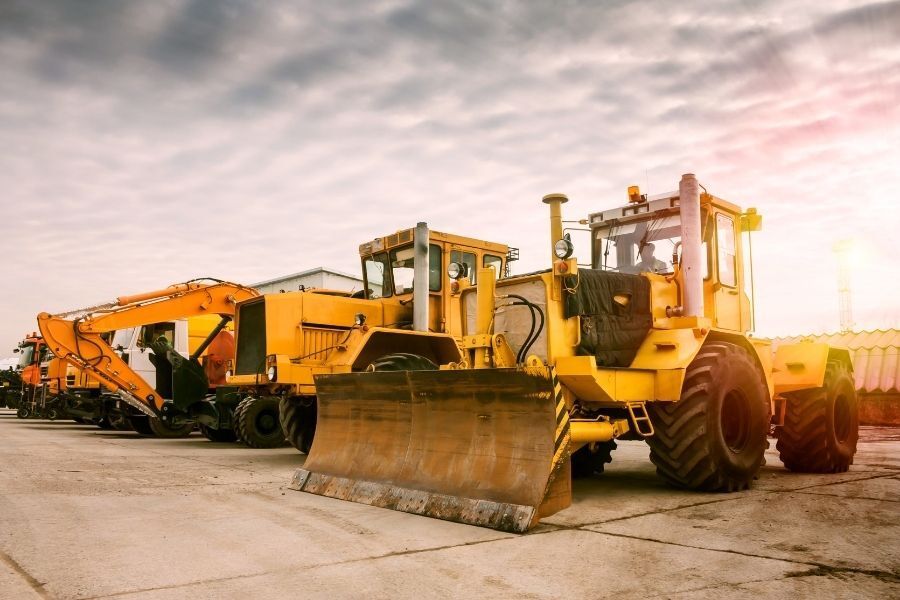Heavy Equipment Rental: Large Equipment for Any Kind Of Construction Task
Heavy Equipment Rental: Large Equipment for Any Kind Of Construction Task
Blog Article
Optimize Your Budget by Comprehending the Costs Linked With Construction Tools Services
Comprehending the full extent of prices associated with construction devices leasings is essential for optimizing your spending plan. What techniques can be used to successfully take care of these costs and make sure a more efficient rental experience?
Review of Rental Expenses
When considering construction tools rentals, comprehending the linked prices is critical for efficient budgeting and job preparation. Rental prices can differ significantly based on numerous aspects, including devices type, period of rental, and place. The preliminary rental fee often mirrors the equipment's market demand and its linked operational capacities, affecting the general cost.
In enhancement to the base rental rate, ancillary costs may emerge, such as transport fees, gas additional charges, and maintenance charges. It is vital to account for these added expenditures to properly examine the complete expense of renting equipment. Additionally, the rental duration can impact pricing; longer leasings may certify for affordable prices, while short-term leasings might incur greater day-to-day charges.

Break Down of Rental Prices
A thorough understanding of rental prices is vital for professionals and project supervisors intending to maximize their budget plans. Rental rates for building equipment typically include several components, including base rates, time-based costs, and use costs.
Base prices are the core fees associated with the rental of the tools, commonly figured out by the kind and size of the machinery. These prices can differ substantially, influenced by variables such as tools demand, availability, and local market trends. Time-based fees, which may be daily, weekly, or monthly, serve to accommodate different project timelines and rental periods.
In addition, rental prices may consist of usage costs, which apply when tools is made use of past a specified limit, ensuring that the rental business can represent damage. Seasonal demand variations can also impact rental prices, with peak building periods normally commanding higher prices.
Moreover, understanding the rental business's plans regarding maintenance and insurance policy can supply more insight right into the overall expense framework. By evaluating these parts, professionals can make enlightened decisions, making sure the choice of rental equipment lines up with both task requirements and budget plan restraints.
Added Costs to Consider
Understanding the complexities of extra charges is vital for contractors to manage their overall rental expenses efficiently. Beyond the conventional rental rates, different extra costs can dramatically influence the complete price of tools leasing. These charges commonly consist of shipment and pickup charges, which can vary based upon range and logistics entailed in moving the tools to and from the task site.
Furthermore, some rental companies may enforce gas surcharges if the equipment is returned with much less gas than when leased. It is likewise important to be conscious of potential cleansing costs, especially for specific equipment that calls for complete maintenance after use.

Thoroughly evaluating the rental agreement and clearing up these extra charges in advance can help contractors ensure and prevent unanticipated costs that spending plans remain intact throughout the project lifecycle.
Repair And Maintenance Costs
Routine upkeep and heavy equipment rental repair expenditures are often ignored factors that can dramatically affect the general expense of construction equipment rentals. When renting out devices, it is crucial to think about not just the rental costs but additionally the prospective expenses connected with keeping the equipment in optimal operating problem.
Lots of rental business include basic upkeep as component of the rental arrangement; nevertheless, more unexpected malfunctions or extensive fixings can bring about additional costs. It's necessary to assess the rental agreement thoroughly to recognize what upkeep services are covered and what obligations drop on the tenant.
Moreover, tools that is not properly maintained can result in ineffectiveness at work site, possibly increasing and creating delays job expenses. To mitigate these dangers, it is suggested to perform regular assessments and keep open communication with the rental supplier concerning any kind of problems that emerge during use.
Insurance Coverage and Liability Expenses
Insurance policy and liability prices are important parts that can substantially affect the overall expenditure of construction equipment leasings (aerial lift rental). These expenses make sure that both the rental business and the client are safeguarded from potential financial losses emerging from crashes, damages, or burglary during the rental period

Furthermore, customers need to understand any deductibles or exemptions in the insurance plan, as these can affect prospective out-of-pocket costs. Recognizing the conditions of any kind of insurance protection is essential to prevent unexpected costs. Ultimately, budgeting for insurance and liability costs can help make sure a smoother rental experience and safeguard versus monetary threats linked with building jobs.
Verdict
In conclusion, an extensive understanding of the prices associated with building and construction equipment rentals is vital for efficient spending plan administration. Inevitably, informed decision-making relating to equipment leasings adds to the total success of construction ventures.
Rental costs can differ dramatically based on a number of aspects, consisting of devices type, period of service, and place (rental company near me). The rental duration can impact pricing; longer rentals may qualify for discounted prices, while short-term leasings could sustain greater daily fees
By performing thorough study and involving with reputable rental business, specialists can properly navigate the complexities of rental pricing, inevitably maximizing their financial sources.
Past the standard rental prices, different supplementary charges can substantially influence the overall expense of devices leasing. Rental companies frequently supply obligation insurance coverage that covers injuries to third celebrations or damages to property, while devices damage insurance coverage can cover the price of repairs or replacement if the rented out devices is harmed.
Report this page